I’ve been trying to reach Bullionville and Carman Heights for years, ever since Hubby told me about them and I saw the sites on a map. I’ve made several attempts to reach them. All were frustrated by bad and washed-out roads and the sites remained a “lost city of Atlantis” to me… until now.
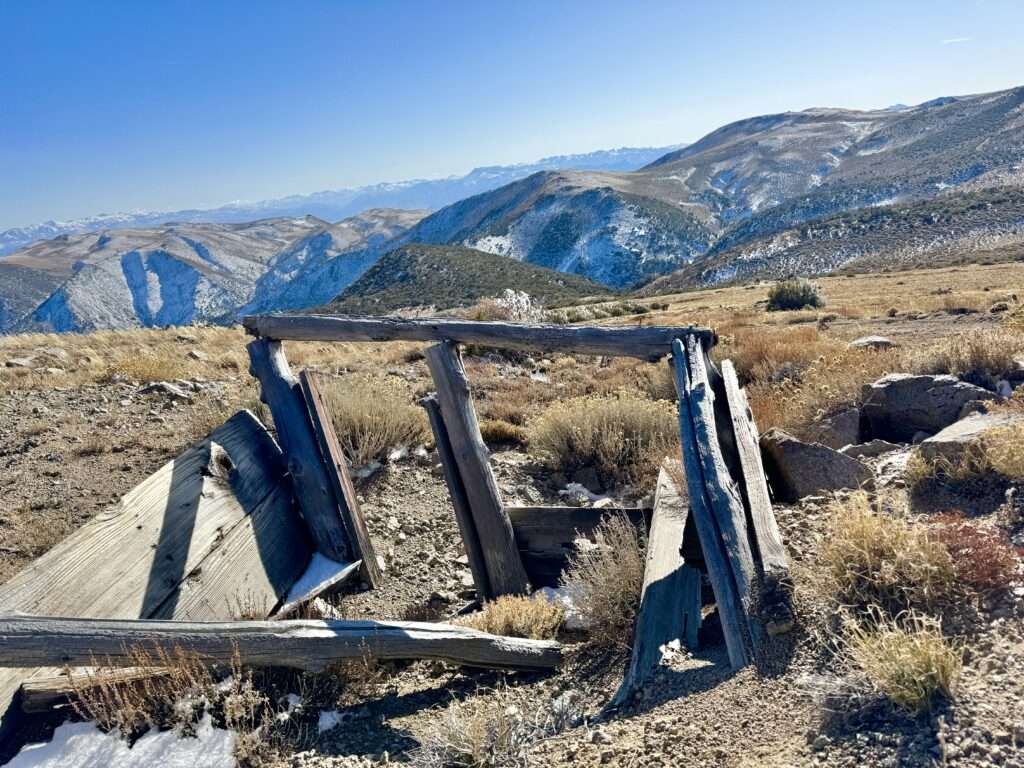
Carman Heights and Bullionville are Douglas County’s forgotten ghost towns and mining camps. While only a little evidence of their existence remains, they played a critical role in the county’s mining history.
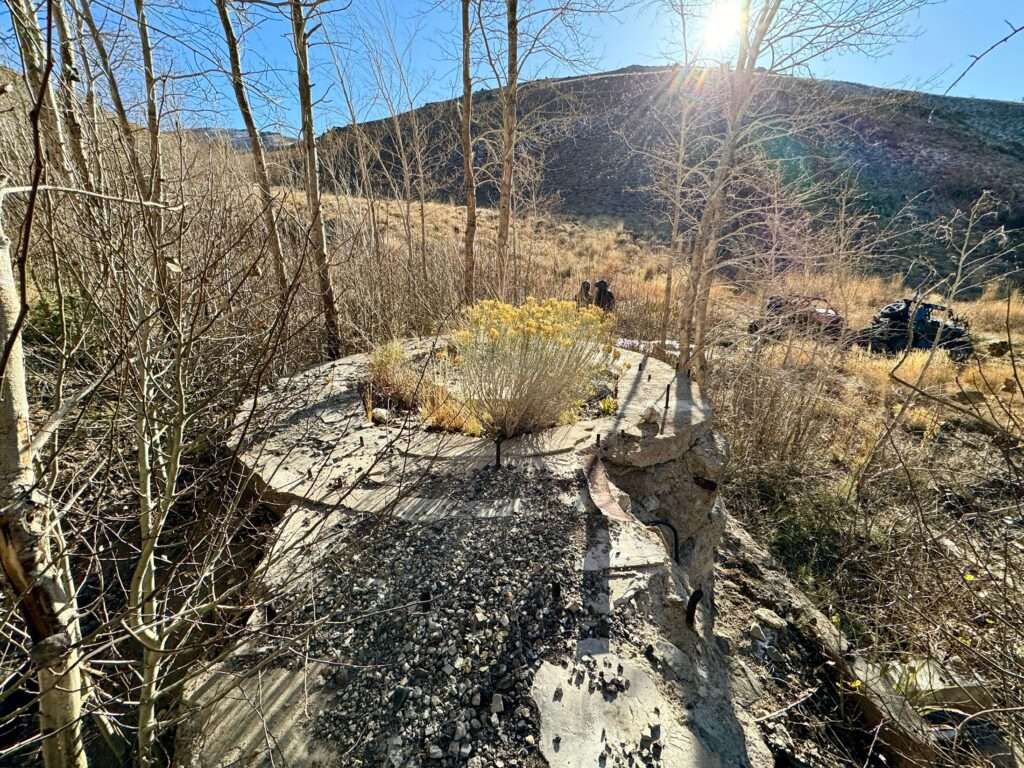
Ghost Towning
Bullionville is a well-known ghost town in Lincoln County, yet there are almost no references to Bullionville in Douglas County or its sister settlement of Carman Heights. Stan Paher’s Nevada Ghost Towns and Desert Atlas marks Bullionville on a map but not Carman Heights. There is no mention of either town in his big book, Nevada Ghost Towns and Mining Camps, or as I refer to it, “Nevada Ghost Town Bible.”
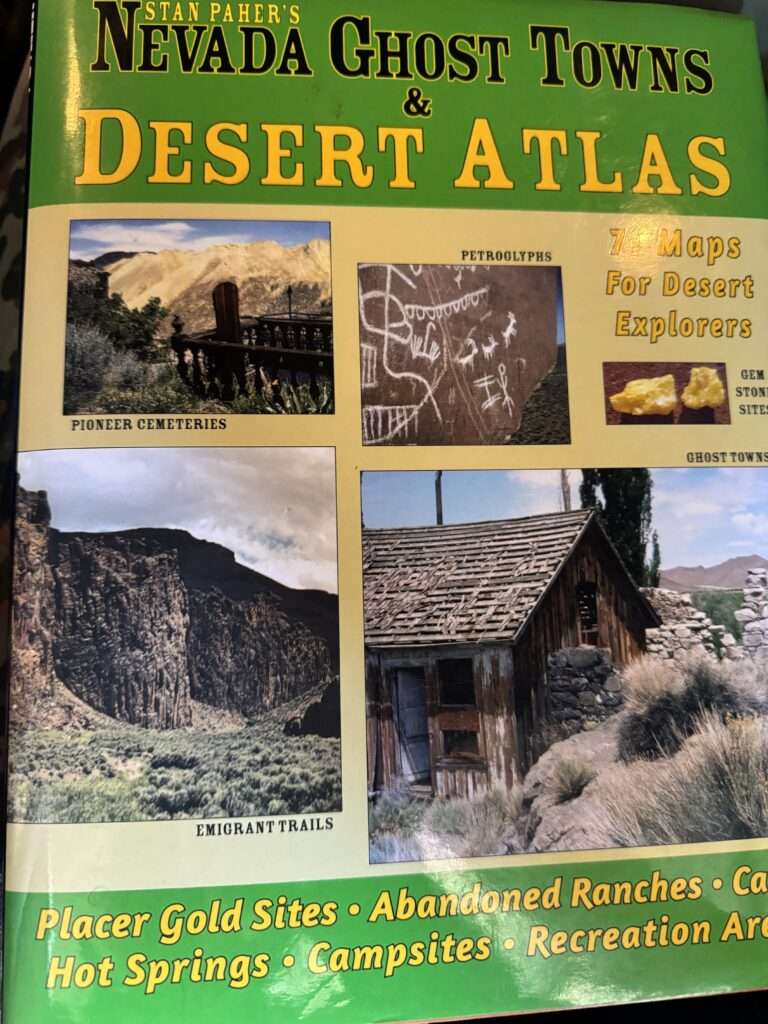

I found references to the towns and the surrounding mines in the Pine Nut Chronicle: History and adventures of Mining in Douglas County Nevada. Hubby visited what he thought was Bullionville in the early 1980s, but not much remained of the town or mines. I later realized he was at Carman Heights. I have wanted to visit Bullionville for years but until we bought Honey Badger, it wasn’t a possibility.

I thought I lost the opportunity to visit these historical sites.
Numbers Fire
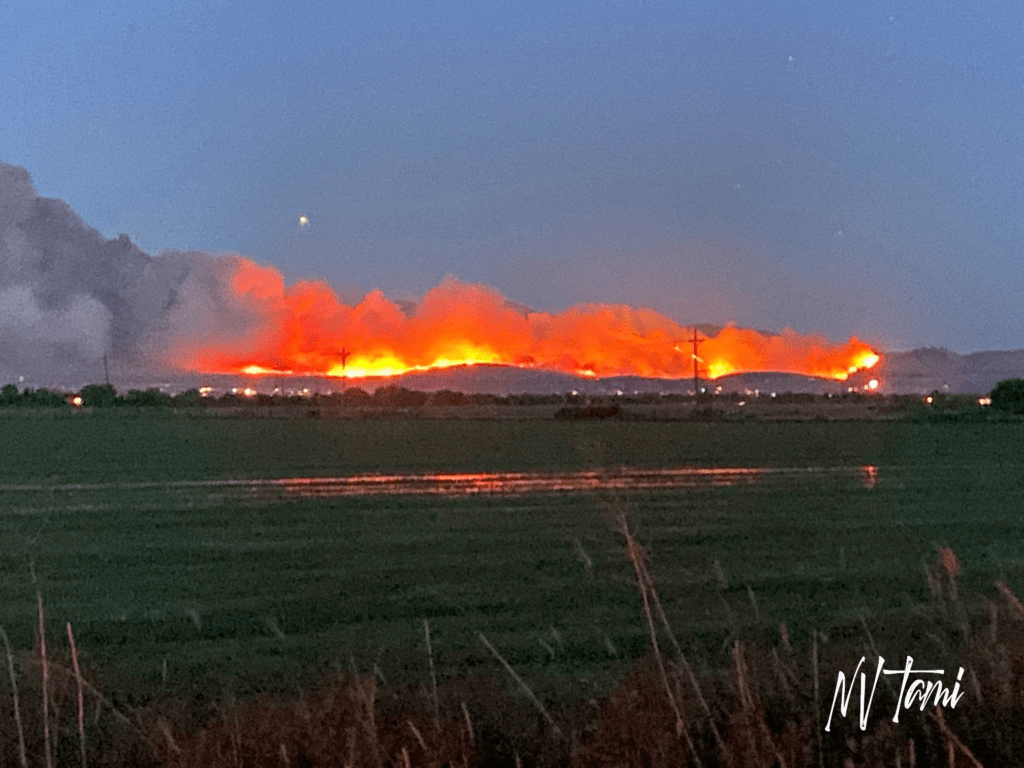
On July 6, 2020, a truck with mechanical issues ignited three separate fires on Highway 395 south of Gardnerville. The three fires quickly grew together and became known as the Numbers Fire. Over the next month, the fire consumed over 18,000 acres in the Pine Nut Mountains.
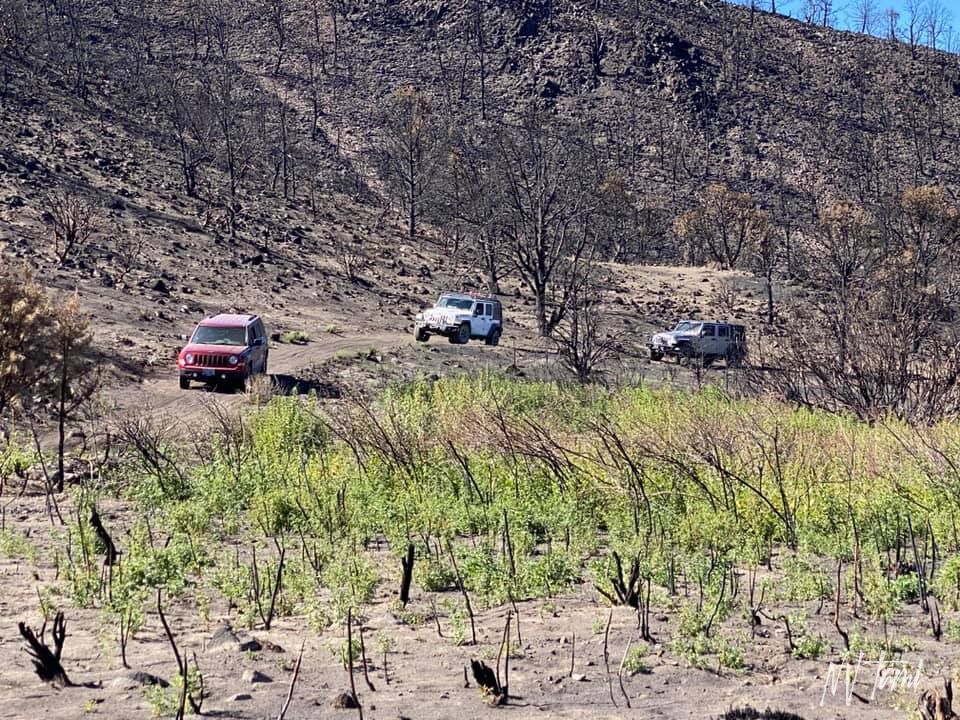
In October of that year, four brave friends decided to accompany me on a six-hour tour. The Professor, Ginger, Marian, and Gilligan. Sorry, wrong show.
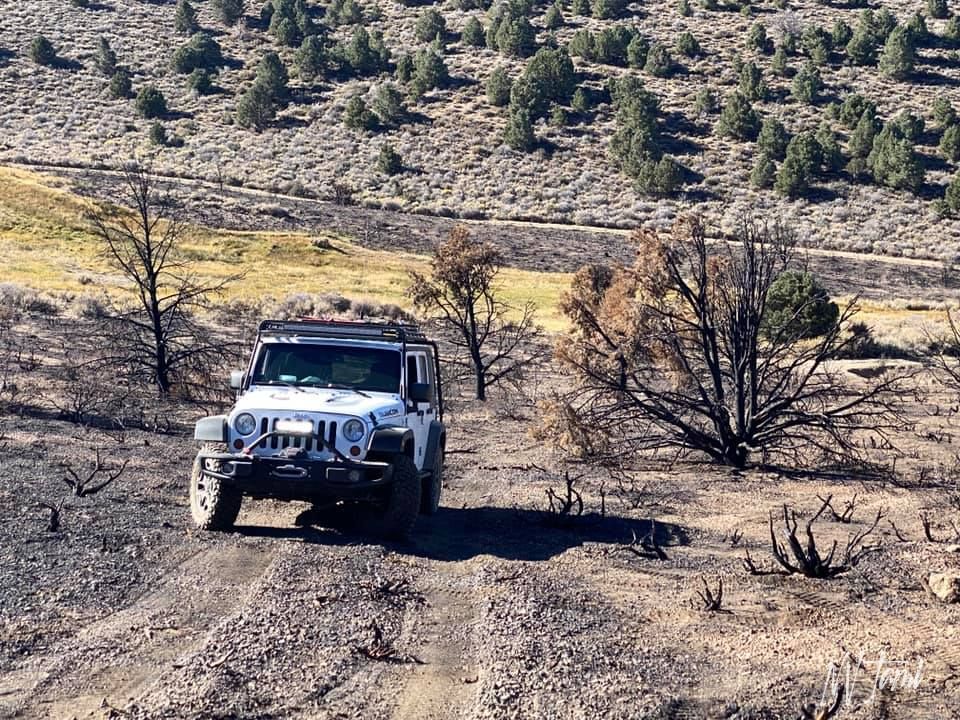
We tried four different routes to access Bullionville. We tried to go around, over and through 7600′ Sugar Loaf. Each road was inaccessible without a dirt bike or ATV.
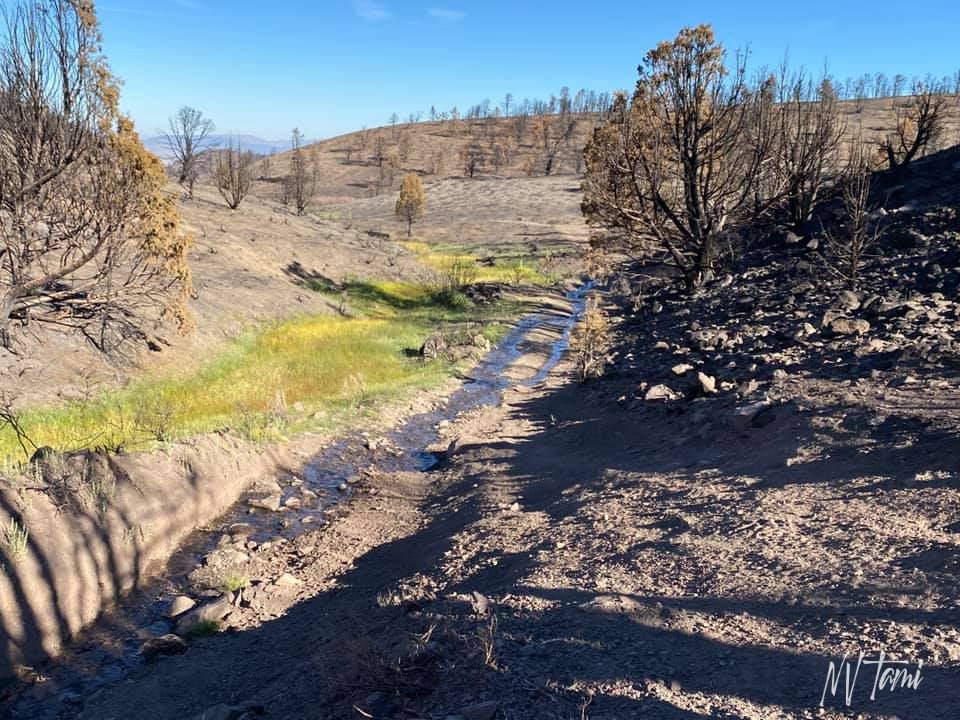
While we missed Bullionville, we visited Preacher’s Mine. Preachers operated in the time frame as Carman Heights. It had notoriety during prohibition as the first still raided by Federal officers in Douglas County.

Mining in the Pine Nut Mountains
Prospectors first explored the Pine Nut Mountains in the 1860’s. What would become the Longfellow group of claims was one of the earliest and largest producers. The mine transported ore to Virginia City mills in 1863 for processing.

(Photo credit: Legends of America)
The first owners of Longfellow were Carson Valley miners C.M. Knox and Jack McKnight. Early production netted $50,000. Peter Ericksen obtained control of the mine in the 1870’s. The first mill operated at Carman Heights in 1872, a steam-powered arrastra. Ericksen formed a partnership, but this was abandoned by 1881. Ownership transferred hands several times.
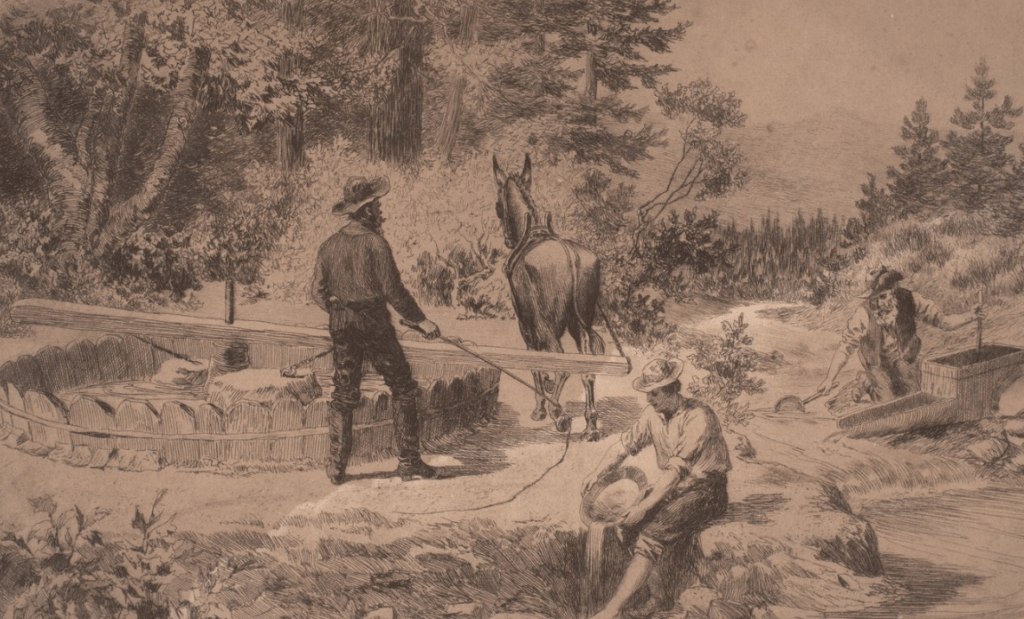
(Photo credit: Western Mining History)
Carman Heights
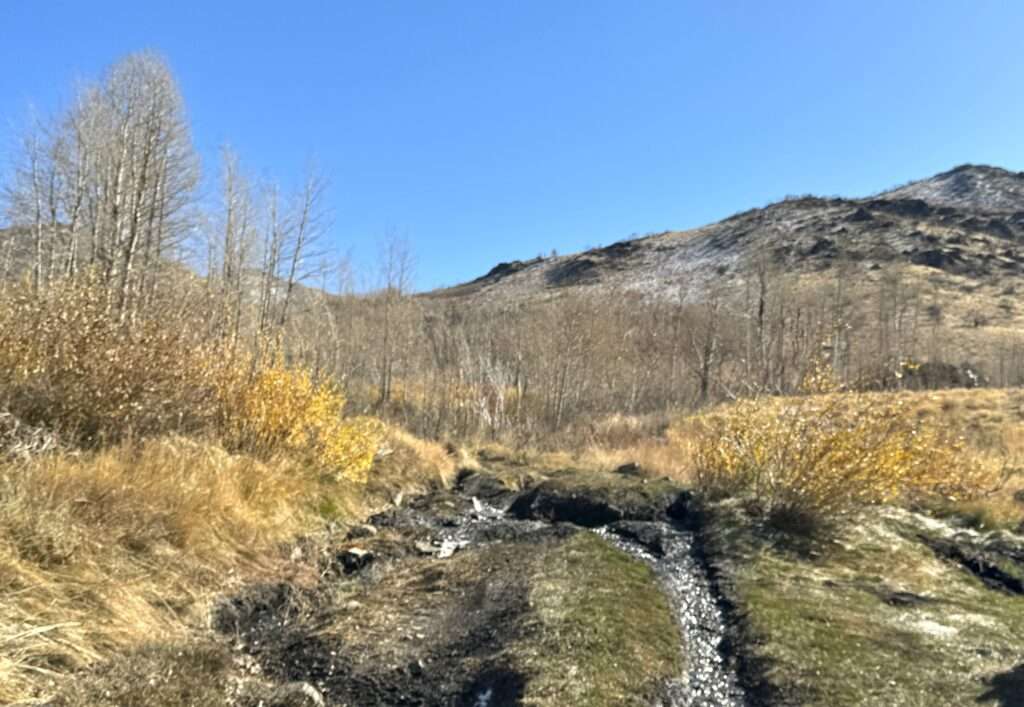
Mining in the Pine Nut Mountains took off in the early 1900s. Ed Carman purchased a 2-stamp mill from the Dangbergs. He located the mill two miles below the mines, along Pine Nut Creek. The location was ideal; it was on a hillside to take advantage of gravity, the creek was spring-fed and ran perpetually, and quaking aspens sheltered the small canyon.
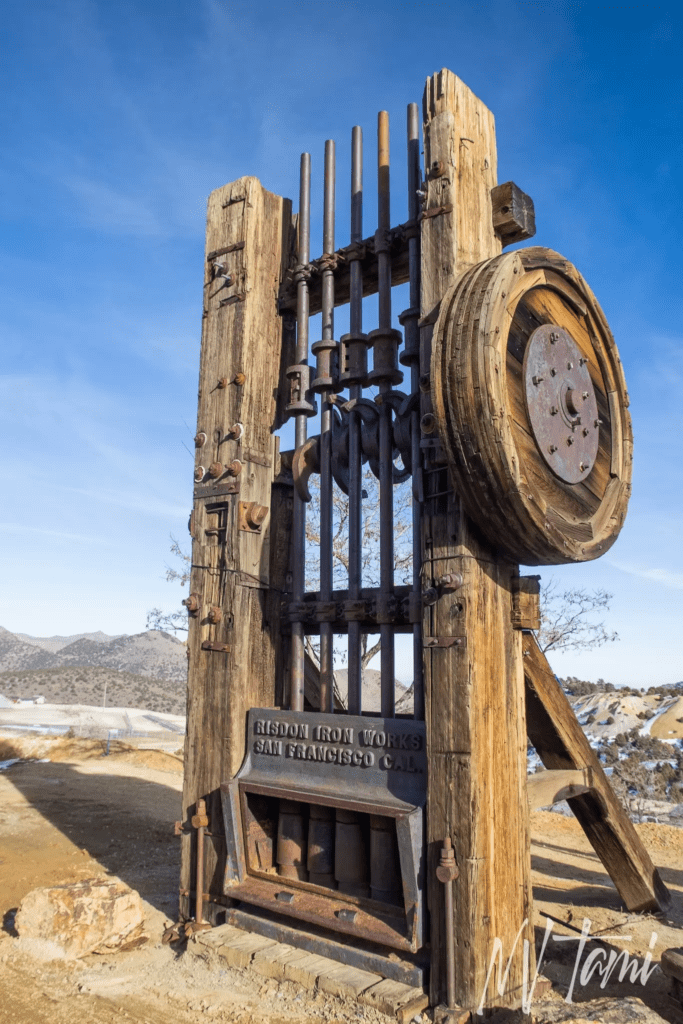
One hundred yards above the mill, Carman added a bunkhouse for three miners and a home for himself and his wife Maud, whom he married in 1901. The mining camp became known as Carman Heights. Additional miners lived at Bullionville, below the peak of the mountains.

(Credit: Find a grave)
The road to Carman Heights and Bullionville was more of a cow trail than a road. It was steep and frequently washed out. In 1906, a cloudburst resulted in a flash flood. Carman and his wife, who were eating lunch at home, barely escaped. The water destroyed most structures but spared the mill.
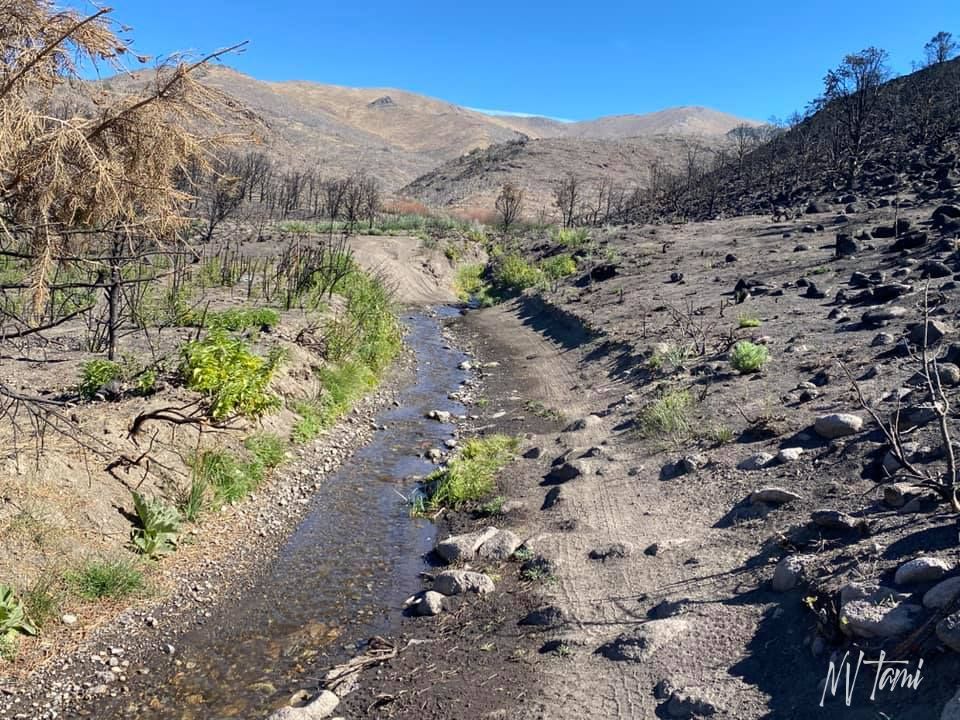
Within a few months, funds were exhausted. Carman traveled to secure financing and the mines continued. In 1908, a 7-stamp mill and concentrating began operations with plans for a 60-ton milling plant.
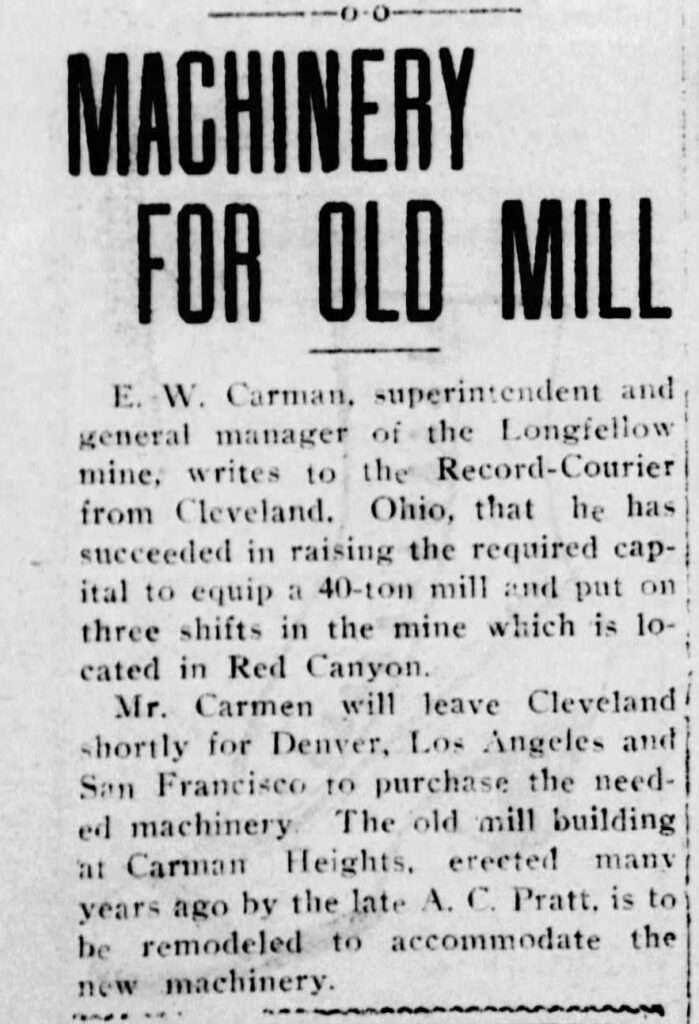
By 1913, things were on the upswing. The mill and buildings had been remodeled and Carman Heights had two bunkhouses. A power plant was purchased from Dangberg and relocated it to the Big Frank Mine. A telephone line connected Big Frank and Carman Heights.
“Busiest mining camp in the county”
By August of 1913, a 40-ton mill was online at Carman Heights. Carman transitioned from a wagon to a Ford touring car that same year. That first trip to the mine was difficult; the road wasn’t in shape for new-fangled automobiles.
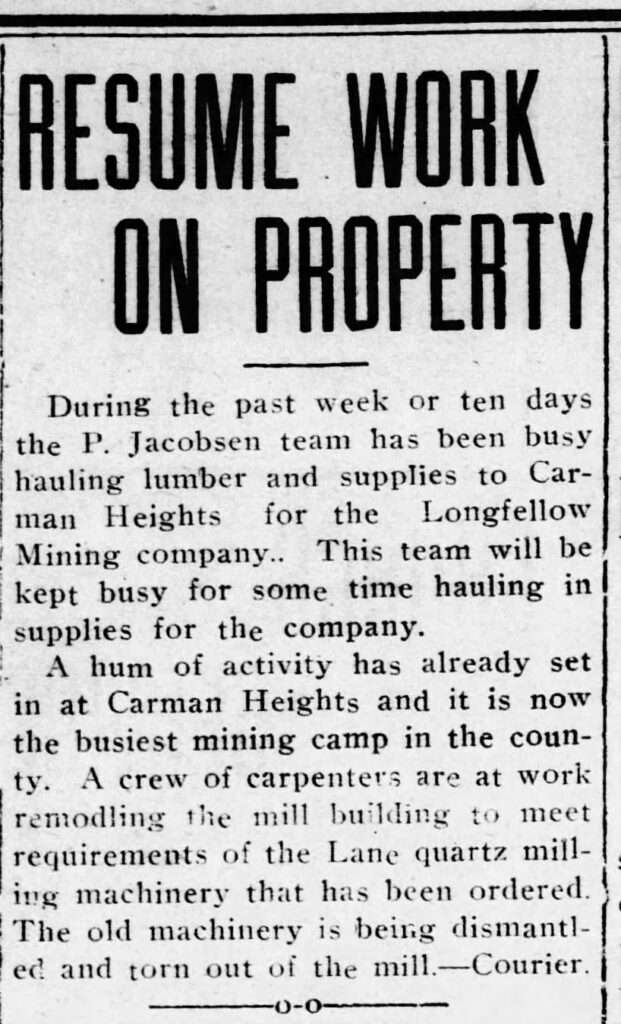
Carman improved the roads and soon the mines had two tractors to transport ore from the mines to the mill at Carman Heights. The mines ceased operations the winter of 1913-1914 due to weather. The previous year, a foot of snow fell in the spring.

The mines ceased again for two years in 1920 due to insufficient funds. Soon after resuming operations, Carman died of infection at his house in Gardnerville. He spent twenty years working in the mines at Carman Heights and Bullionville.

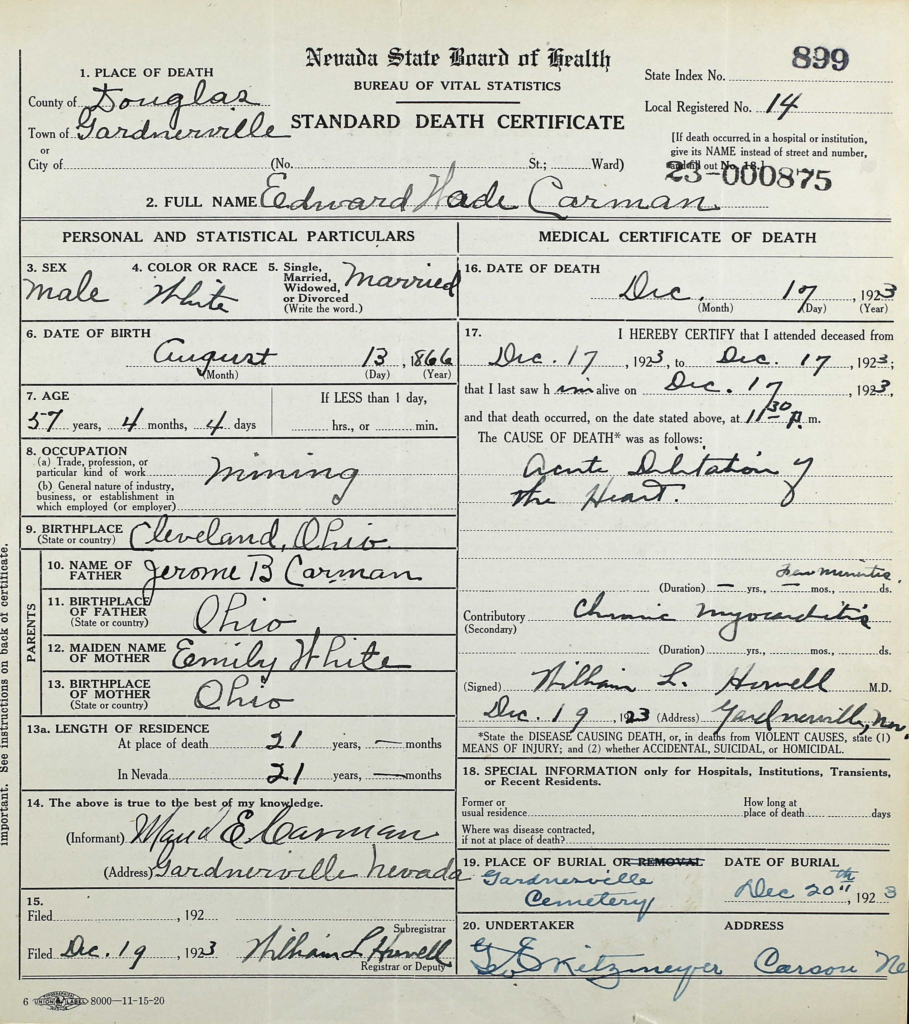
(Credit Find a grave)
Pete Brennan assumed control of the operation. A 10-ton mill was shipped to Minden on the Virginia & Truckee Railroad in 1925.
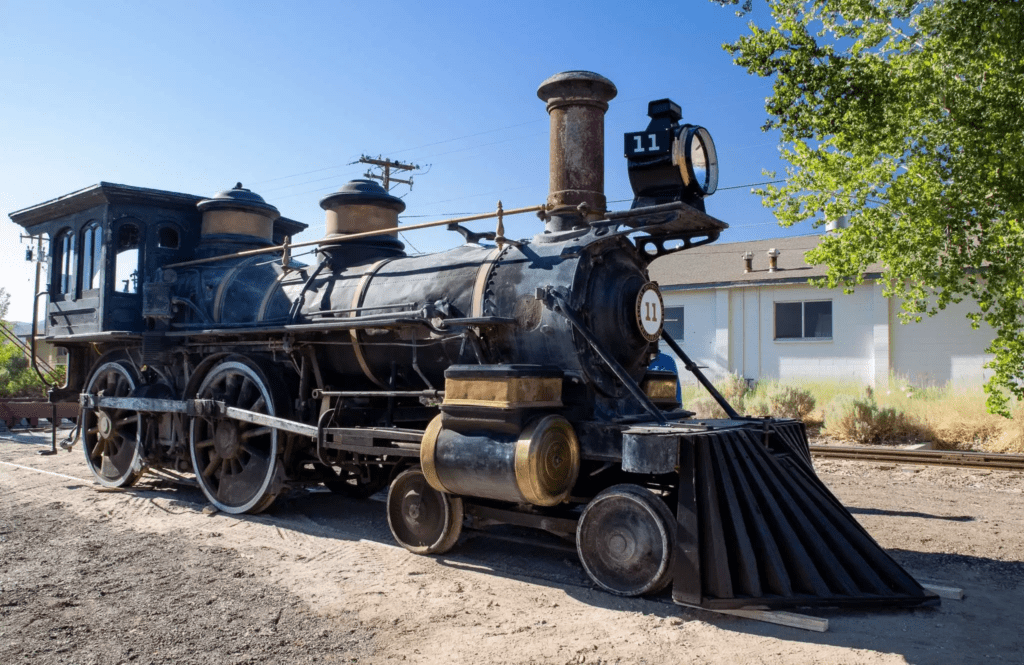
On October 21, 1925, Pete Brennan was standing on the edge of a drift at the 50′ level when the ledge collapsed. Brennan fell 200′ and was buried under seventy feet of earth and debris. Mining operations ceased during the recovery effort. During the 21 days to recover Brennan’s remains, the mine owners closed the mine.
Carman Heights ruins
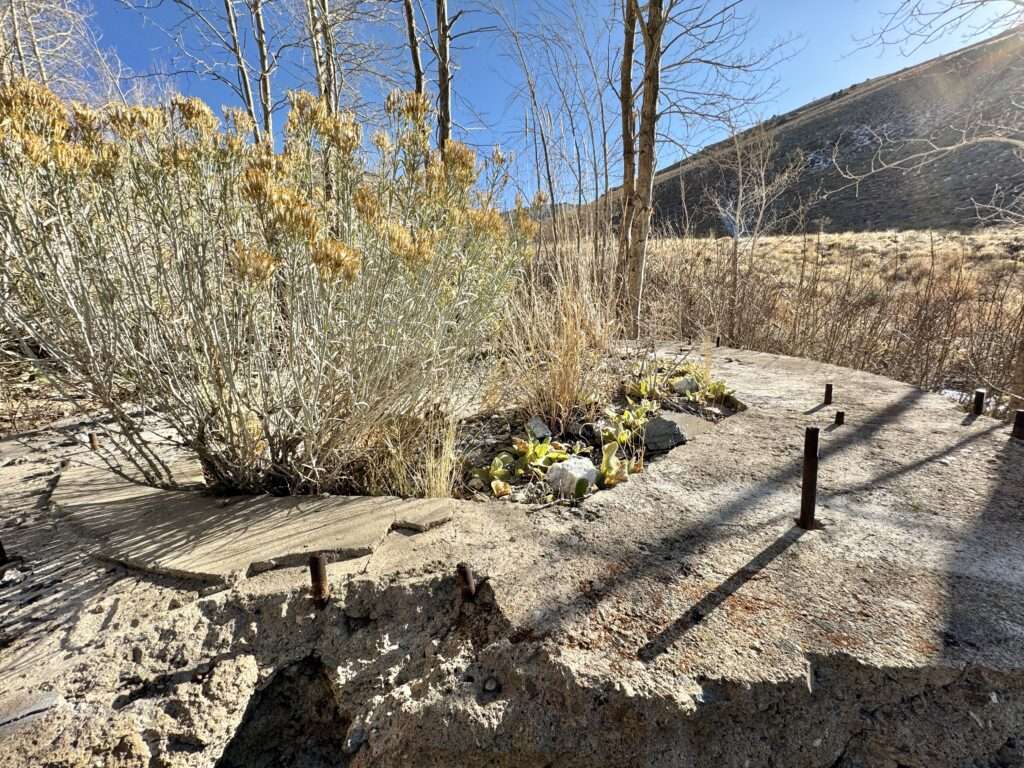
Carman Heights had a brief revival. In 1941, Harry Hawkins and Dave Wood repaired the mill and worked the claim. Eventually, the mining equipment was moved. Sadly, vandals set the bunkhouse on fire in 1972.
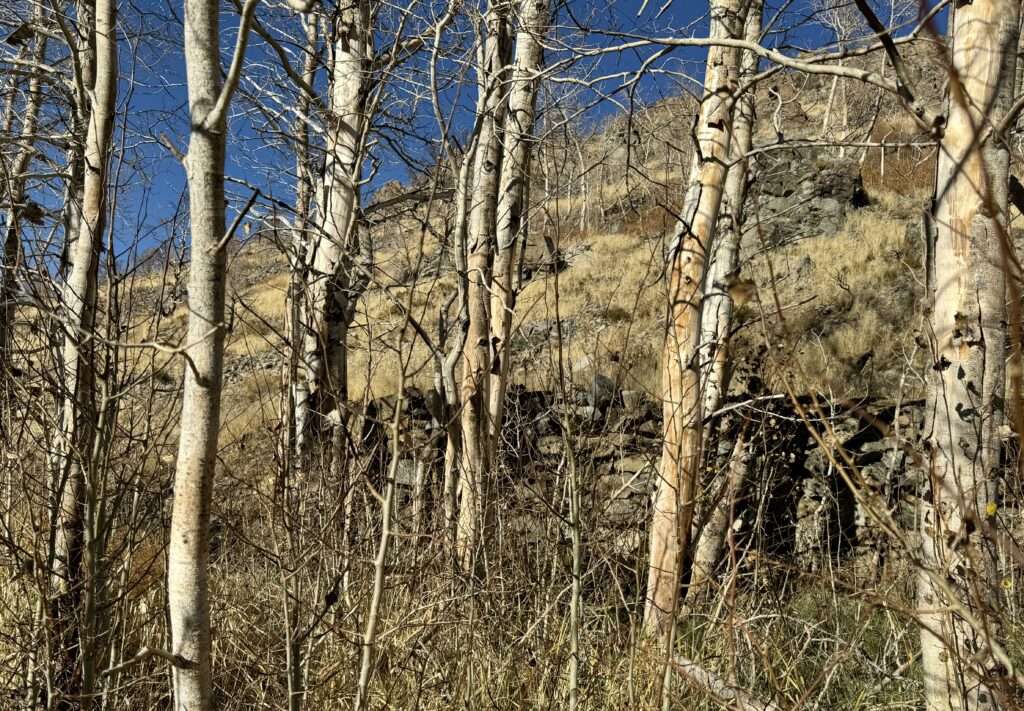
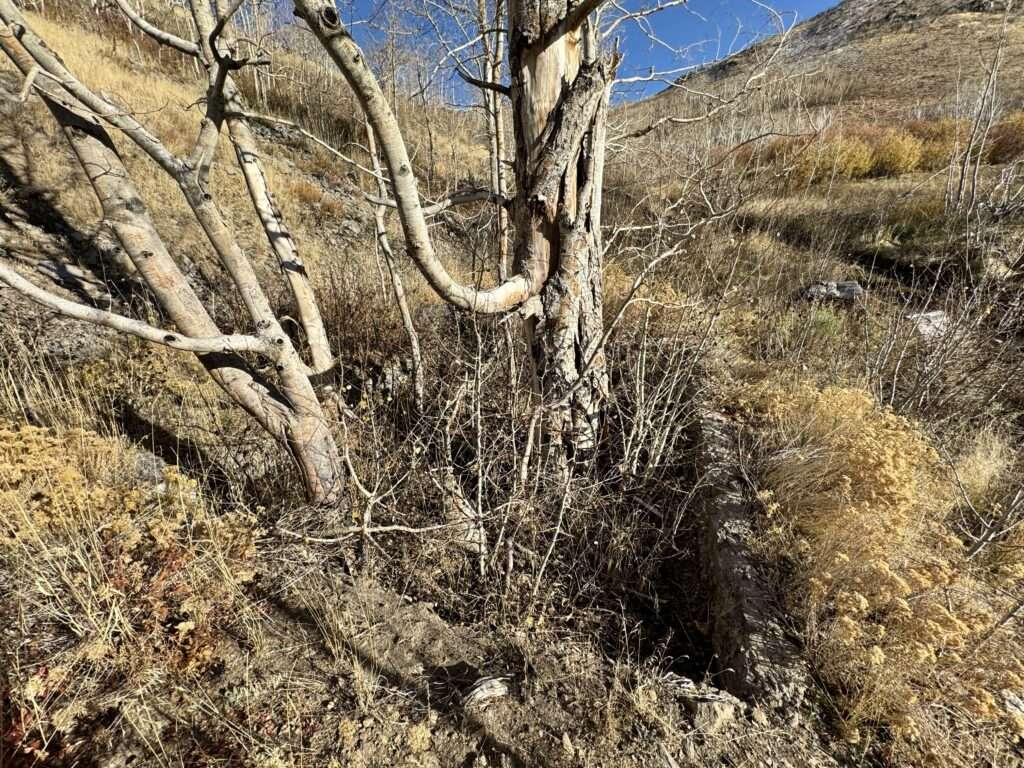
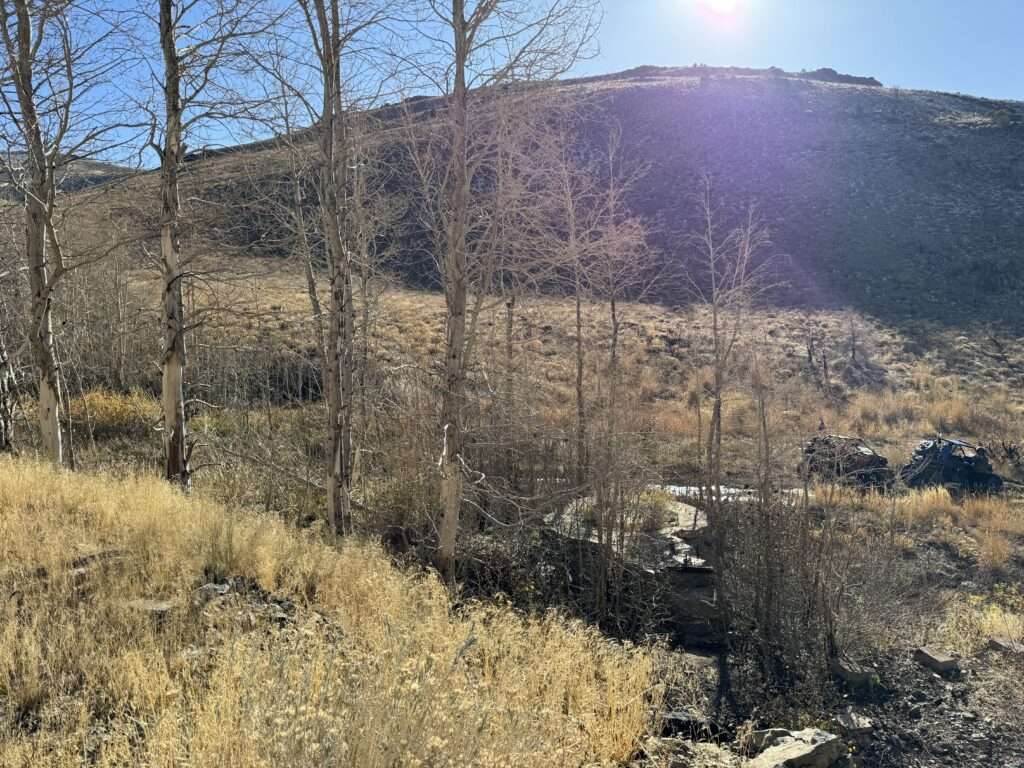
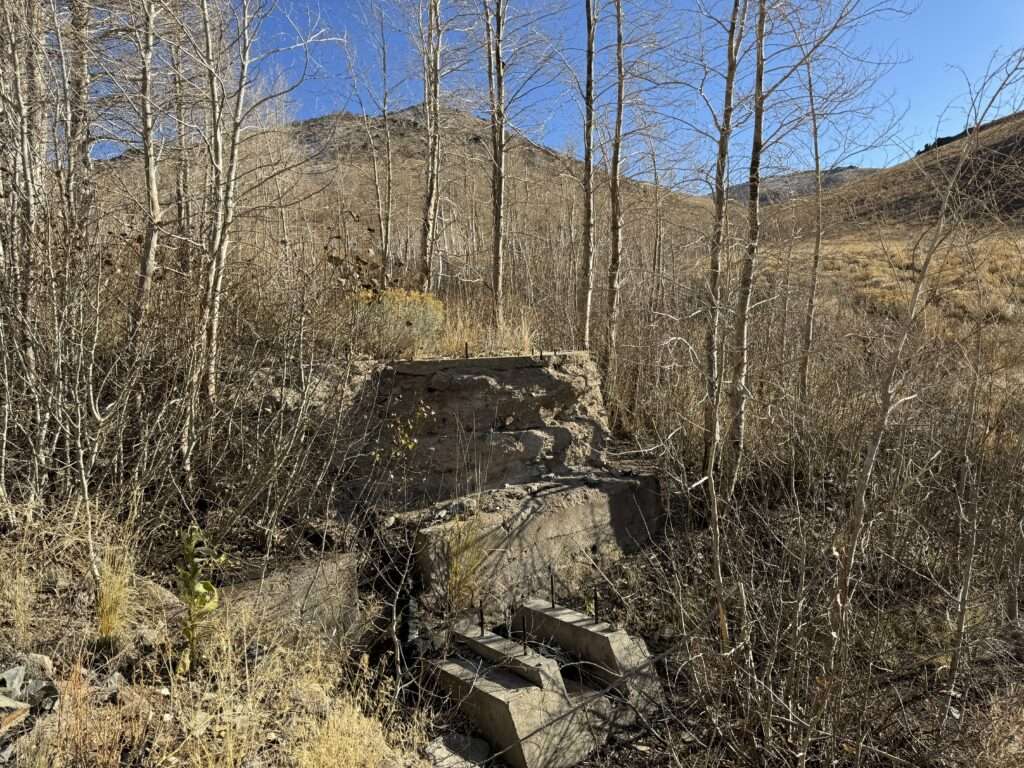
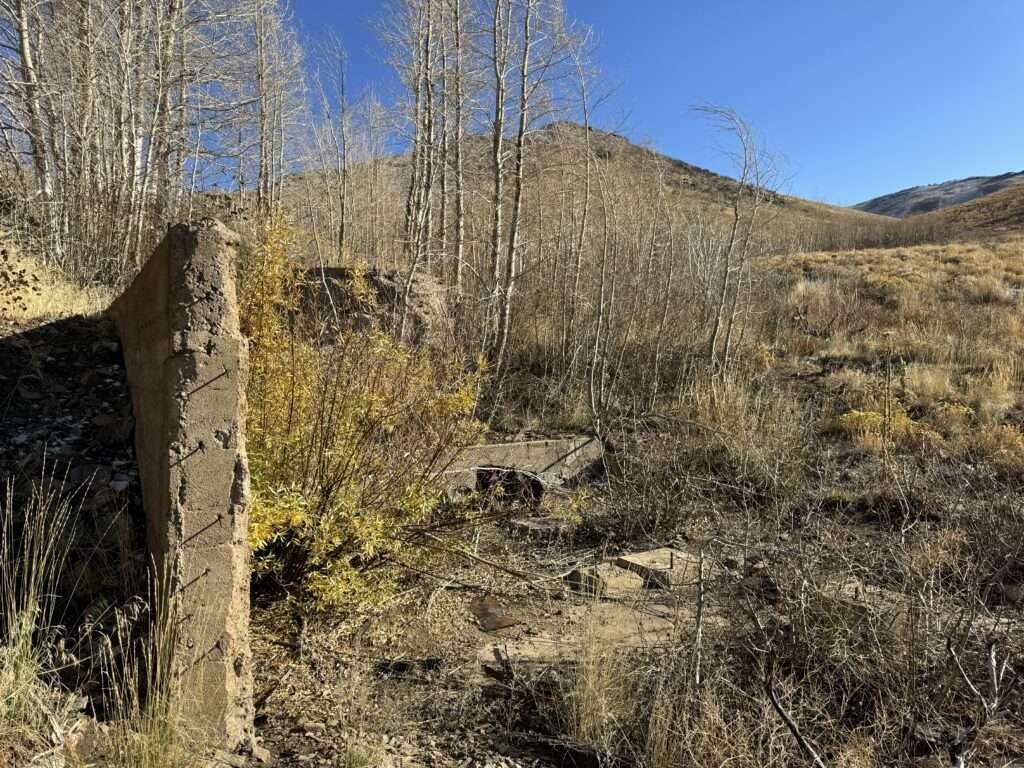
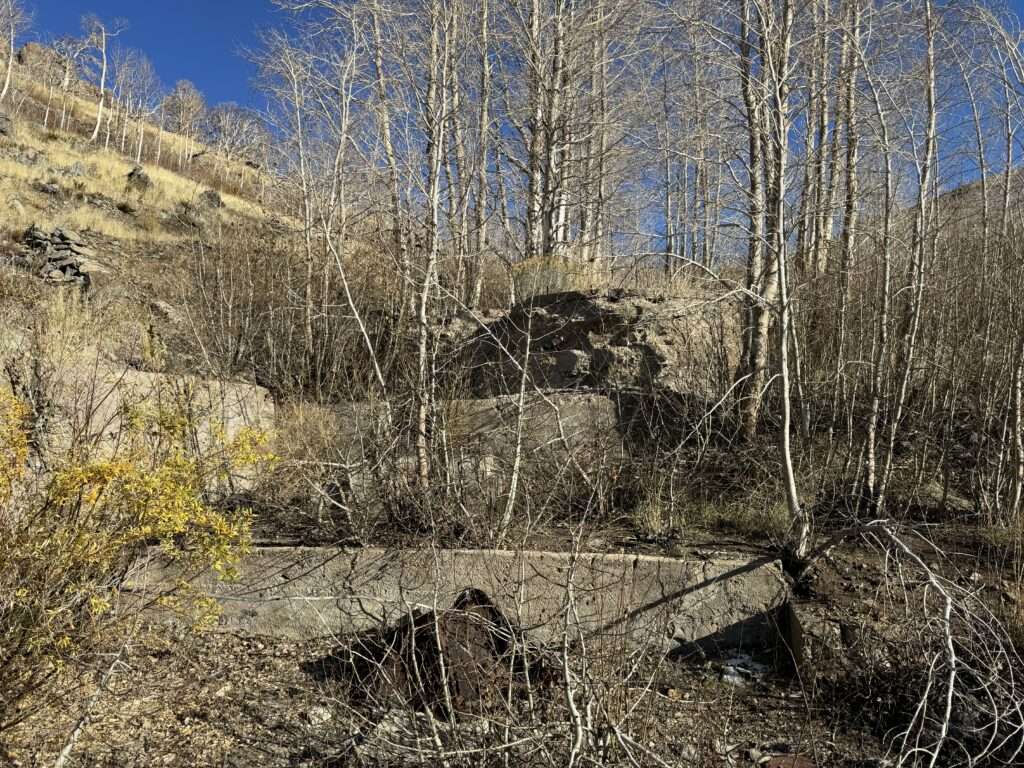

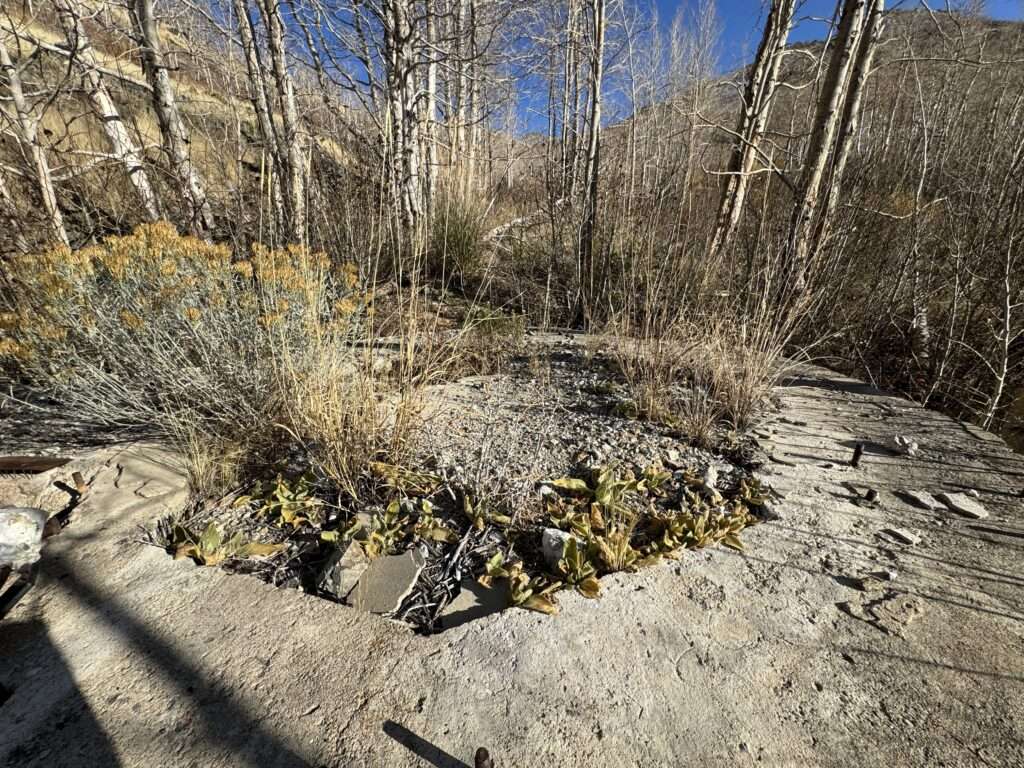
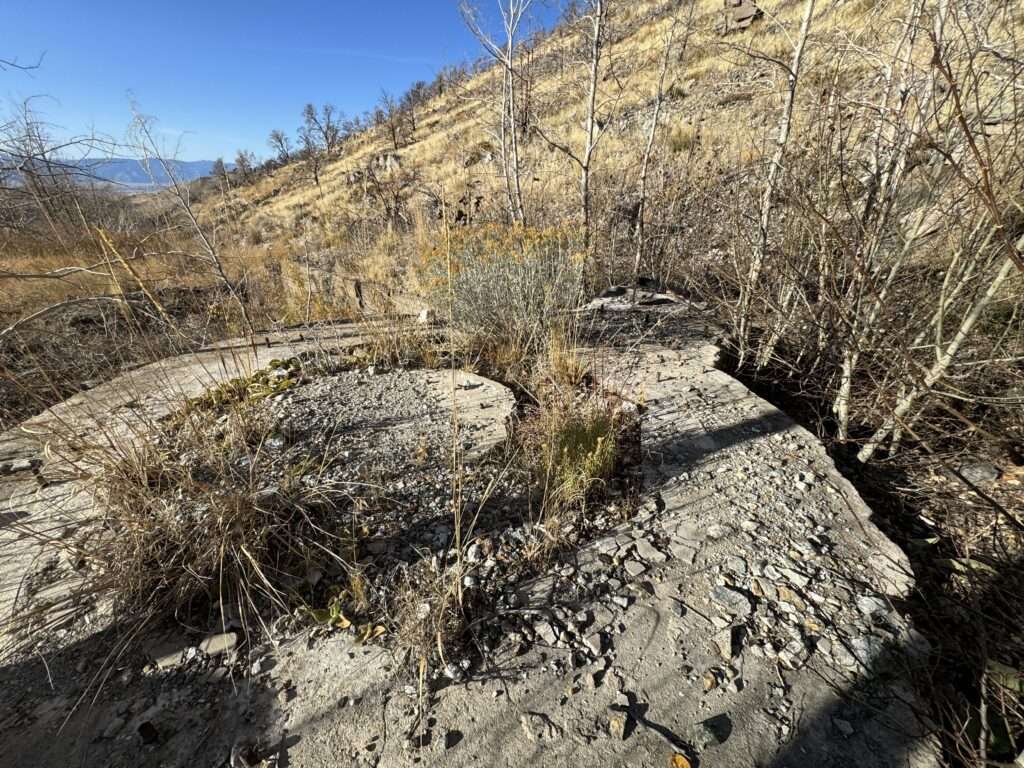
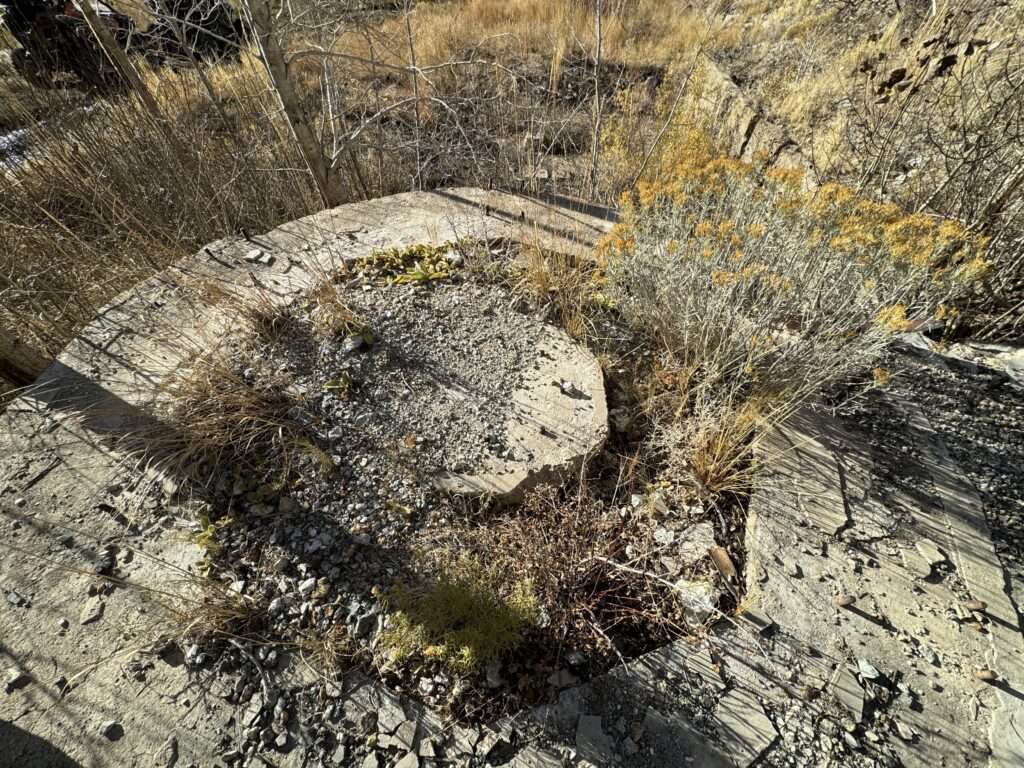
Bullionville

Some miners lived at Bullinville, east of Carman Heights, 1/3 of a mile from the Longfellow Mine. Nation in Pine Nut Chronicles describes the camp as “a primitive early-day mining camp.”
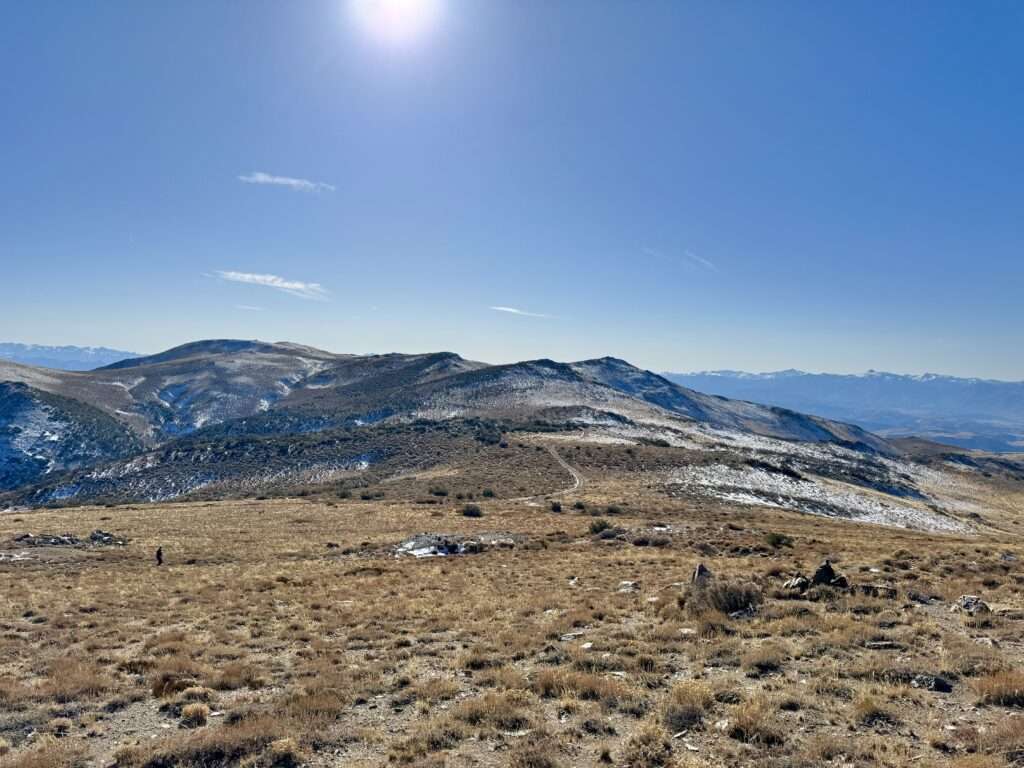

Finally, I made it to my Atlantis
My friends Mike, Byron and Carol invited me on an ATV trip into the Pine Nut Mountains. I was up to going anywhere, but I told them about Bullionville. All were interested, especially Byron, who is a huge history lover.

I was a little dubious heading out in an ATV in November. The high for the day was forecast to be only in the 40s. That is fine with Honey Badger’s heater and butt warmer, but it sounded a little chilly in the open air. I headed out wearing fleece-lined pants, a fleece shirt, a down vest, a jacket and a parka. It seemed a little warm at lower elevations, but when we reached 9,000′, they were worth their weight in gold.

Parts of the road were in pretty bad condition between the fires, snow and cloud bursts. It was cool to make it to Bullionville finally, but it is Carman Heights where we spent much of our time.

References
- The Daily Appeal April 6, 1912
- The Daily Appeal March 15, 1913
- The Daily Appeal May 3, 1913
- Lincoln, Francis Church. Mining Districts and mineral resources of Nevada. Nevada Publications, 1982. Pages 36-37.
- Nation, Nile: The Pine Nut Chronicle, The History of Adventures of Mining in Douglas County, Nevada pages 119, 172, 173, 177, 184, 187 188, 190 and 194-5.
- Paher, Stanley: Nevada Ghost Towns and Mining Camps
- Reno Evening Gazette, July 18, 1908
- Reno Evening Gazette, September 5, 1913
- Reno Evening Gazette, August 15, 1925
- Western Mining History: Longfellow Mine
- Wikipedia: Numbers Fire
Greg says
Always good reading with historical backdrops. Thank you!
Greg says
PS…I always get confused when I see “awaiting moderation.” Was I too effusive, or sumpin’?
Tami says
Due to spam, posts require my approval before they are shared. I try and respond as soon as I can, but sometimes I’m out of network.
Tami says
Thank you, I’m glad you enjoyed the article. This was a fun one to research.
Richard mcgrew says
The old lost mine channel on you tube had a short video on Buillionville. It was interesting.
Tami says
Their only Bullionville Video I see is from Lincoln County. That makes sense, the Lincoln County was a town and much larger.
This Bullionville, Douglas County is off the radar for most people.